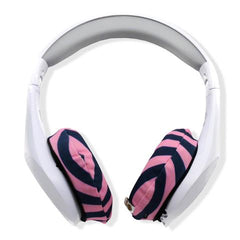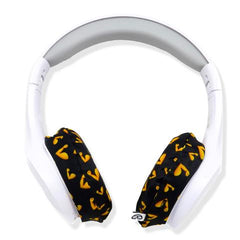Tips for going back to the gym after COVID.
If there’s one thing sure to mess up your workout schedule, it’s a global pandemic.
The gyms are open. The gyms are closed. Classes start-up again. Classes are cancelled…
But things are finally looking up. COVID-19 vaccinations are accelerating around the world and more of us are returning to the spaces and places we love to workout in. But not everyone is excited about going back to the gym. For those who’ve been shielding, who’ve been personally affected by the virus, or who feel anxious about re-joining the gym community, going back may be tinged with trepidation.
And that’s fine. Adjusting to life in lockdown wasn’t easy, so we shouldn’t be surprised that re-adjusting back to it may be equally as challenging.
Whether you’ve had COVID and are ready to start exercising again, or if you’re returning to it after a long absence, we have some tips for going back into the gym.
12 Tips for Going Back to the Gym After COVID

- For anyone nervous about catching COVID, ask your gym what they’re doing to keep members safe. You should expect an enhanced cleaning schedule. Ask how many clients are allowed in at any one time. They might have temperature checks. They should have sanitiser stations across the gym floor for members to wipe down the equipment and to wash hands. Have a list of questions ready before phoning or write them in an email if that’s more suitable. Checking social media and the gym’s website may answer many of your queries but don’t be afraid to ask for clarification.
- Take your own antibacterial wipes and hand sanitizer with you. This will make it easier to sanitize where necessary. Use your own towel, too. Disinfect all equipment before using it and then wipe it down for the next person.
- If you’re nervous about the gym being too crowded, avoid going at peak times. Some gyms will have a feature on their app to indicate levels of busyness throughout the day. Ask if not. Go earlier in the morning or later in the evening where it may be quieter.
- Get comfortable with the fact that you may not be as fit as you were before. If you’re coming back after months away, take it steady. Don’t be discouraged. You’ll get back to your pre-COVID level with a little time and patience. Ease yourself back into things because the last thing you want is an injury that puts you back on the sofa for the next six weeks. Fitness apps can be great here. Use their tracking features to measure your progress back to your peak (or back to where you need to be). This will help you focus on where you’re going, rather than where you were before.
-
Don’t jump straight back into a 5-day routine off the bat. Go easy on those first few sessions. Build in rest days. Your body needs more time to recover. Good sleep and good nutrition shouldn’t be underestimated.
- If you were hit hard by COVID and are still feeling the effects, speak to a medical professional or COVID specialist before exercising. Lung issues can be one worrying long-term effect. Inflammation of the heart is another and the advice for that is not to return to the gym for between 3 and 6 months afterwards. Exercise is so important to maintaining health but it can also be a threat to your wellbeing. If you’re not physically ready for a serious gym session, try other softer exercises like walking to stay fit.
- Updating your gym wardrobe is a great way to reconnect to your gym-thusiasm. The GymHugz store has some great new additions. You can shop gym shorts as well as its range of bestselling moisture-resistant headphone covers.
-
Get your body used to moving again. That means warming up with dynamic stretches and cooling down with static ones. Help prevent injuries by easing yourself back into it.
- If you’re feeling anxious about going back inside a gym, then take it slowly. Maybe just go and walk around the building before committing to that first session. Meet a friend inside for a coffee. Have a back-up plan if you think you may back out. If you can’t face going inside, go for a walk or a run instead or watch a workout on Youtube.
-
Listen to what your body is telling you. When something starts hurting, stop. Struggling for breath? Stop or slow down. Switch to another form of exercise.
- It’s a great time to focus on your form and to go slowly. Correct any mistakes you never got around to fixing before. Concentrate on each movement so that when you’re ready, you’ll be back fitter and stronger than before.
Remember, you don’t have to go back to the gym right now. There are plenty of ways to stay fit outdoors. There may be outdoor gyms at a local park. British Military Fitness and similar companies offer outdoor bootcamps.
You might also prefer to invest in gym equipment for the home. Check out our good friends at Energym. They’re launching an electricity generating indoor bike in June 2021.
Ready to start shopping for your return to the gym?




